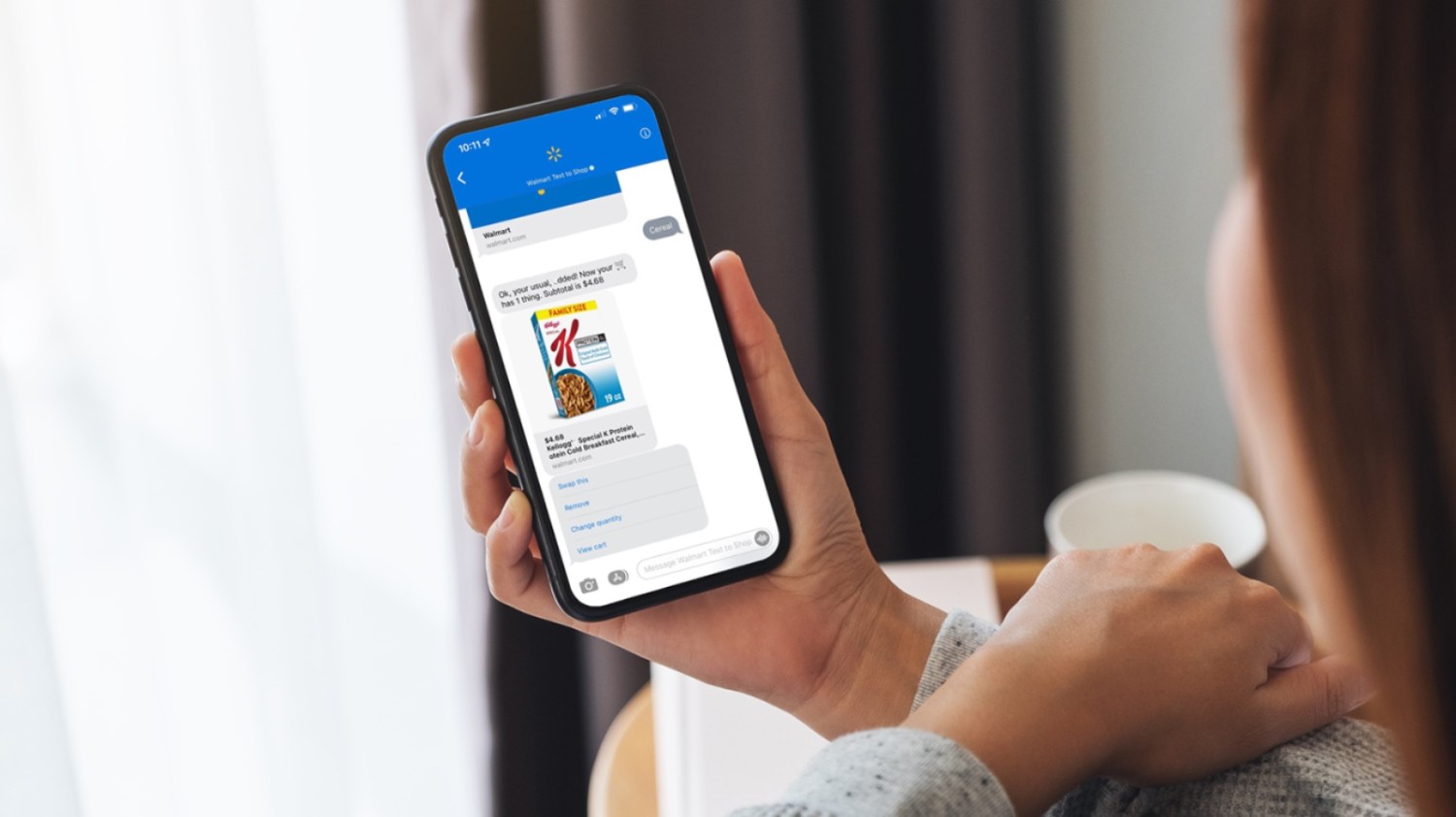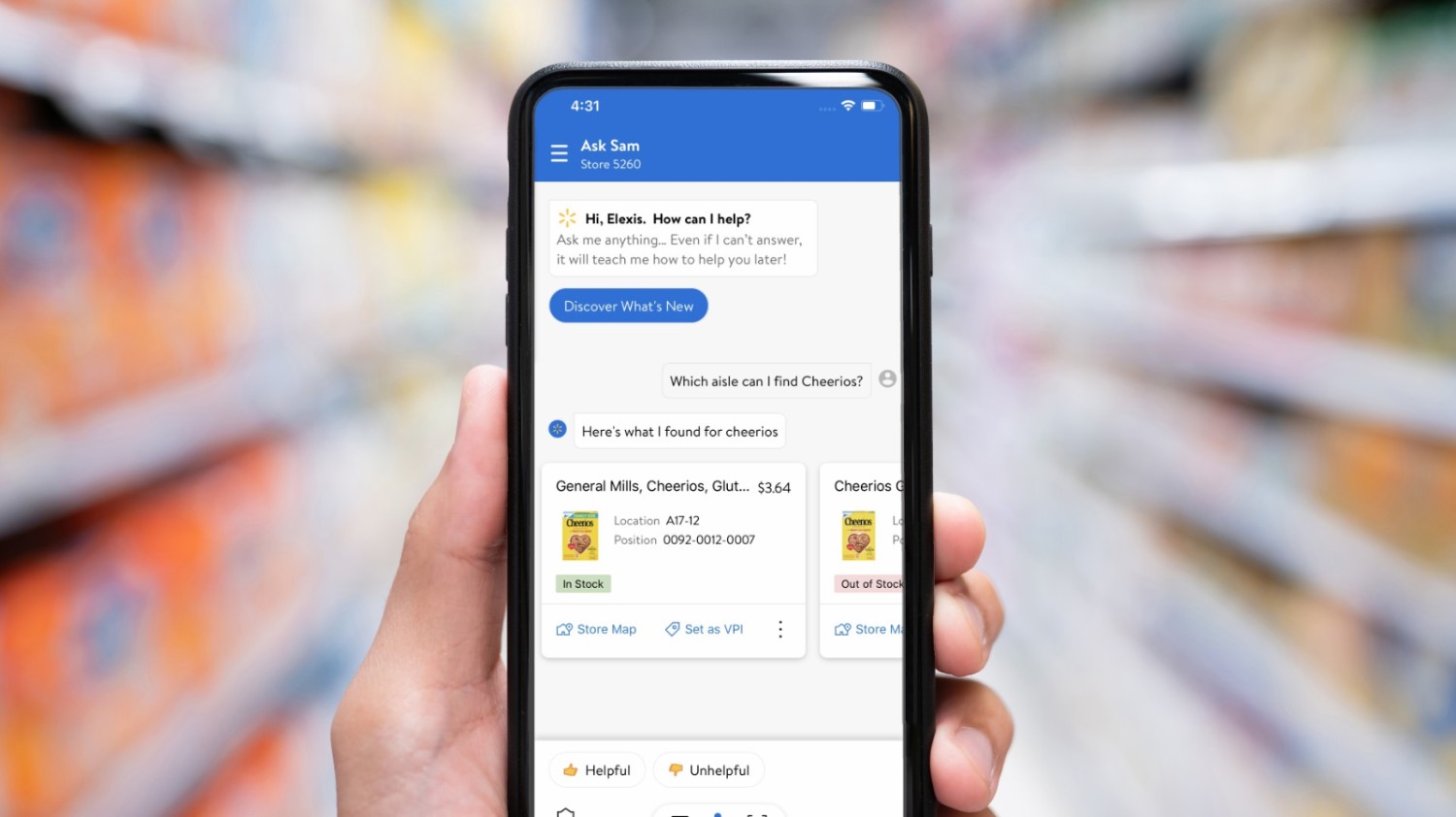Three Ways We’re Using Conversational AI at Walmart
Customers are shifting from “do it with me” to more proactive “do it for me” experiences, and AI is a critical enabler in how we provide those experiences, whenever and wherever they need us. As a result, Walmart has been developing conversational AI capabilities for the past several years.
Over time, it has evolved into a robust multi-layered solution that spans across several areas of business to support our customers, members, associates, drivers and marketplace sellers, among others.
Here’s a look at how we’re leveraging conversational AI to help our customers and associates around the world save time and have a better experience:
Letting customers shop as fast as they can talk and text
Voice shopping is a convenient way for customers to reorder items, and Walmart customers can do so via Walmart Voice Order, which enables customers to pair their Walmart accounts to their smart speakers and mobile devices.
For instance, if a customer says, “Hey Google, add Great Value orange juice, a loaf of Great Value bread and a dozen eggs to my cart,” our system uses natural language processing (NLP) to understand the request, product name entity recognition to identify the products, and their prior purchase information to determine brand preferences.

By using base natural language understanding (NLU) capabilities to understand queries and determine which actions are required, the systems can quickly identify the conversation’s context—including whether it is the beginning of a new query or the continuation of an existing one—and a customer’s needs before executing the task.
In addition to offering voice ordering, customers can also ask for what they want by texting Walmart through their preferred iOS and Android devices. Text to Shop enables customers to search for items, add or remove items from their carts, reorder their favorite products, and schedule a pickup or delivery when they're ready to check out, through a quick text conversation.

The experience leverages the same Conversational AI platform and state-of-the-art retail AI models for powering NLU as Voice Order to distinguish a customer’s intent and the entities related to their request (e.g., “add almond milk to cart” or “schedule delivery for 5:30 p.m.”).
Using chatbots to help customers around the world
When customers have an issue with their order, they don’t want to talk to someone – they want it solved quickly and easily. Since 2020, we’ve leveraged NLU to dramatically improve Walmart’s chatbots. As a result, the bots have reduced millions of customer contacts by immediately assisting customers with simple questions about the status of an order, returns and more, enabling agents to focus on assisting customers with more complex queries.
Comprehending users’ real-time conversations across multiple countries including, the U.S., Canada, Mexico, Chile, and India, requires understanding natural languages with all its associated context—including being knowledgeable about catalogs containing hundreds of millions of products and indexes of retail language—as well as deciphering users’ localized languages and needs.
For example, while engineering teams in Chile were able to leverage capabilities and tools built in the U.S., they still needed to build customized experiences and train retail NLU models on their localized language and phrases. As a result of their work, they were able to save their customers’ and agents’ time and saw customer satisfaction scores (CSAT) increase around 38%.
Making it easy for Associates to find items and more
Our customers aren’t the only ones benefiting from the time saving benefits of conversational AI. Ask Sam, our voice assistant for in-store associates, enables them to locate items, access store maps, look up prices and view sales information, check messages and more, by verbally asking it questions like “What aisle is hand soap located in?” or “Who is in the apparel department today?” or “What’s my schedule for tomorrow?”

Over time, shopping interfaces will become more seamless and available across multiple devices, and touchpoints will become highly personalized.
With millions of products, and more than 230 million customers shopping with Walmart each week, conversational AI is playing a unique role across the business and is crucial in helping us improve customer and associate experiences in stores and online.



